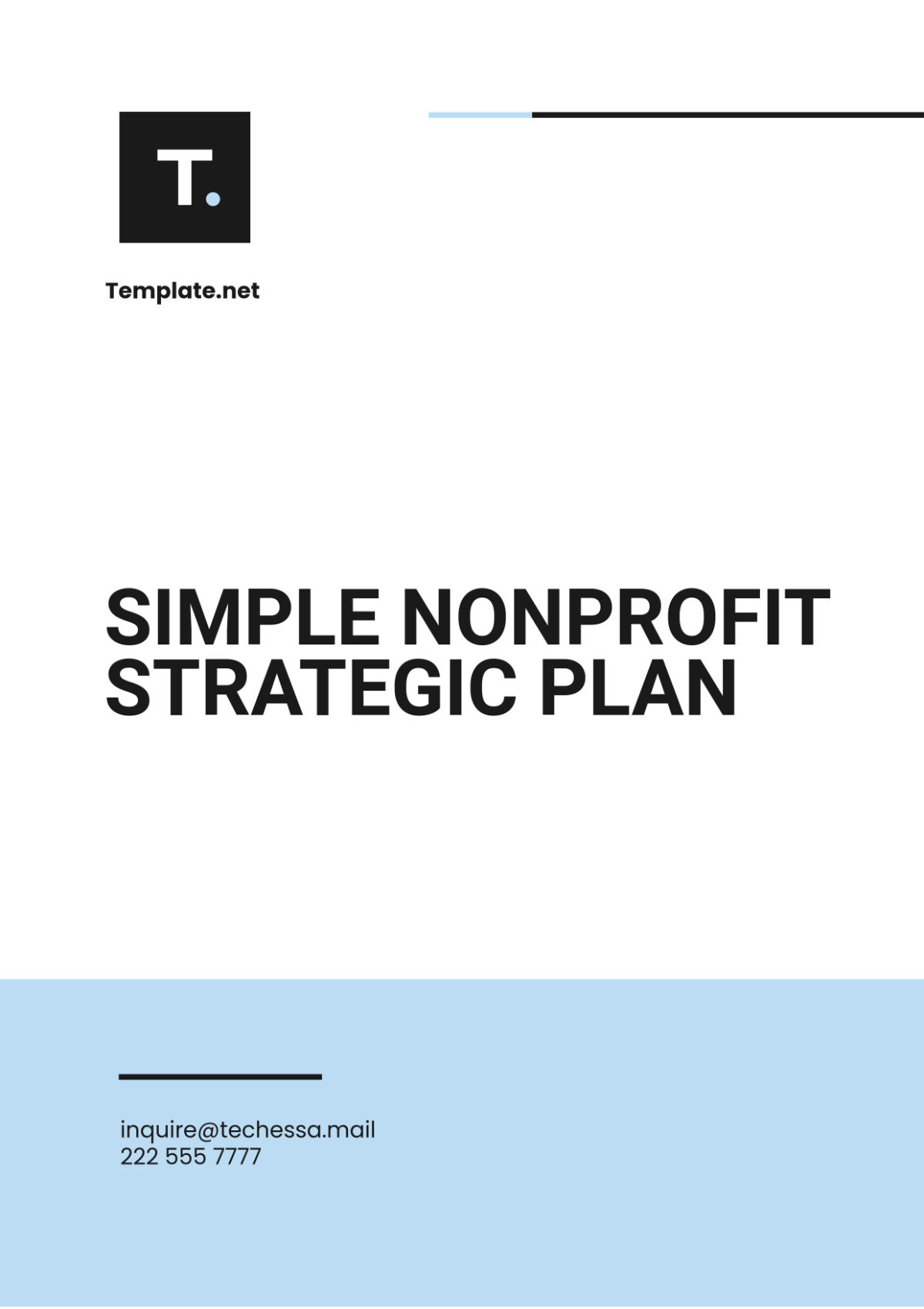Free Simple Nonprofit Strategic Plan

Prepared by: [Your Name]
I. Mission and Vision Statements
A. Mission Statement
Our mission is to empower underprivileged communities by providing access to essential resources such as education, healthcare, and economic opportunities, with a commitment to sustainable and inclusive development.
B. Vision Statement
Our vision is a world where every individual, regardless of background, has the opportunity to lead a healthy, educated, and economically sustainable life. We aim to break the cycle of poverty by creating lasting change in communities.
II. Goals and Objectives
A. Goals
Educational Support: By 2051, increase educational support to over 1,000 children annually, focusing on literacy, digital skills, and career readiness.
Healthcare Access: By 2055, expand healthcare access to 2,000 families, prioritizing preventative care, maternal health, and vaccinations.
Economic Opportunities: Within the next five years, provide entrepreneurship and job training to 500 community members, especially youth and women.
B. Objectives
Education: Develop three new programs by 2052, targeting early childhood, secondary education, and digital literacy.
Healthcare: Partner with at least five local clinics to provide quarterly health screenings, including vaccinations and nutrition support.
Economic Development: Launch a skills training workshop series by Q2 2051, covering essential trades, business skills, and technology. Offer micro-loans to 100 aspiring entrepreneurs by 2053.
III. Strategies and Initiatives
A. Educational Support
Implement after-school tutoring, digital literacy training, and mentorship programs in collaboration with local schools and volunteer networks.
Develop educational resources tailored to community needs, including a library of digital materials and on-site educational workshops.
B. Healthcare Access
Establish partnerships with healthcare providers to offer regular medical checkups, vaccination drives, and health education sessions in local communities.
Promote preventive health through awareness campaigns on hygiene, nutrition, and mental health.
C. Economic Opportunities
Offer vocational training programs, including courses in agriculture, technology, and entrepreneurship, to enhance employability.
Provide micro-loans and mentorship to help individuals start small businesses, to empower community members to generate sustainable income.
IV. Key Performance Indicators (KPIs)
Goal | KPIs |
|---|---|
Educational Support | Number of children enrolled, completion rate of programs, literacy rate. |
Healthcare Access | Number of families receiving healthcare, frequency of health workshops. |
Economic Opportunities | Number of trained individuals, number of small businesses launched, increase in household income. |
KPIs will be reviewed quarterly to ensure targets are being met and to identify areas needing additional focus or adjustment.
V. Resource Allocation
A. Financial Resources
Allocate the budget as follows:
40% to Education: Cover costs of tutors, materials, and learning facilities.
30% to Healthcare: Support partnerships with clinics and provide necessary supplies.
30% to Economic Development: Invest in training materials, loan funds, and job placement services.
B. Human Resources
Recruit seven full-time staff focused on program management and strategic initiatives.
Engage a network of volunteers from local universities and businesses to assist with community outreach and skill-based workshops.
VI. Timeline
Q1 2050: Launch educational programs and initiate the first healthcare outreach in three communities.
Q2 2050: Begin economic development workshops; assess healthcare partnerships and adjust if needed.
Q3 2050: Evaluate educational program effectiveness and make strategic adjustments as required.
Q4 2050: Conduct a year-end review, prepare an impact report, and finalize plans for the following year.
The timeline will serve as a roadmap, guiding quarterly milestones to ensure progress toward long-term goals.
VII. Evaluation and Review
A. Quarterly Reviews
Every quarter, conduct internal reviews to assess progress toward KPIs, identifying any challenges and making necessary adjustments. These sessions will involve input from staff, board members, and key stakeholders.
B. Annual Evaluation
Engage external evaluators at the end of each year to conduct an unbiased assessment of the organization’s impact. This evaluation will provide insights into areas of success and opportunities for improvement, ensuring accountability and transparency.
- 100% Customizable, free editor
- Access 1 Million+ Templates, photo’s & graphics
- Download or share as a template
- Click and replace photos, graphics, text, backgrounds
- Resize, crop, AI write & more
- Access advanced editor
Our Simple Nonprofit Strategic Plan Template from Template.net is the perfect solution for organizations developing a focused, actionable plan. Customizable and fully editable in our AI Editor Tool, this template lets you easily map out your nonprofit's vision, mission, and objectives. Whether you’re building long-term sustainability or expanding your reach, this template provides clear guidelines for success.





























